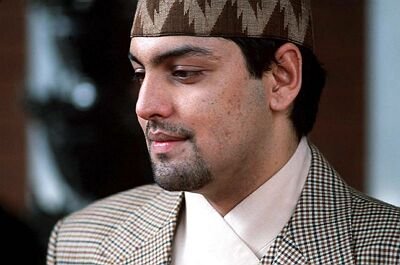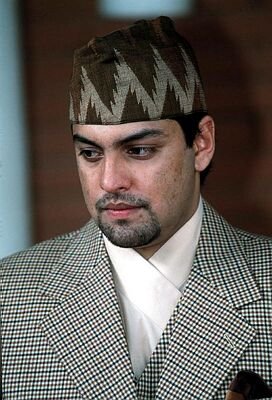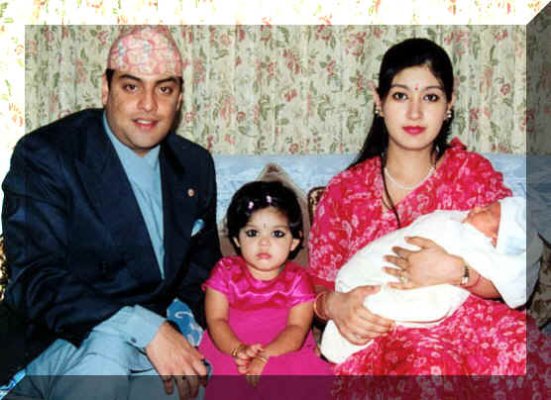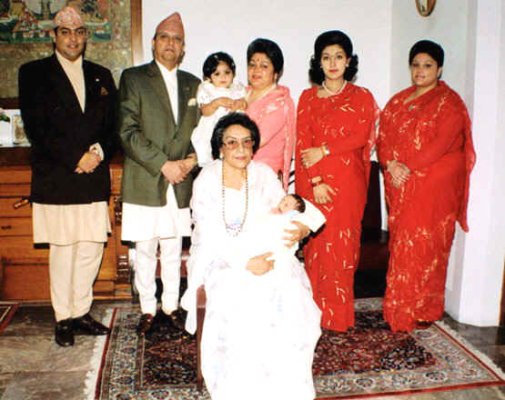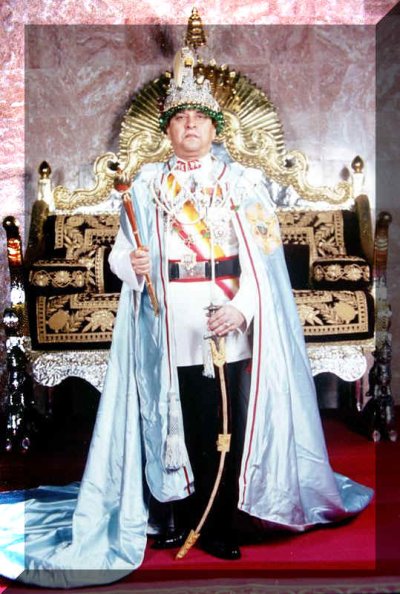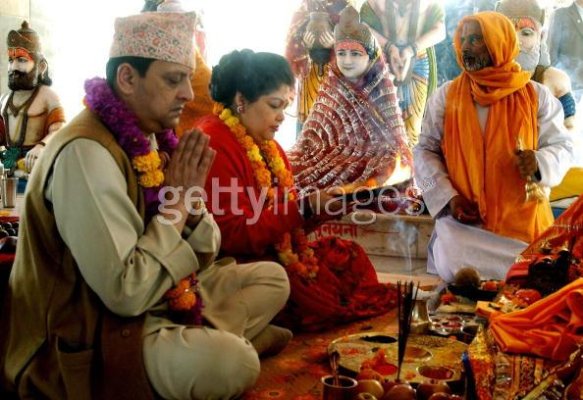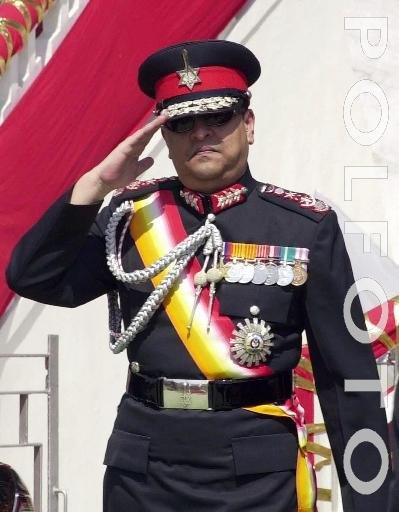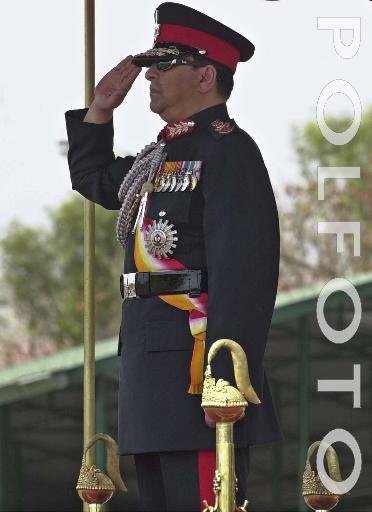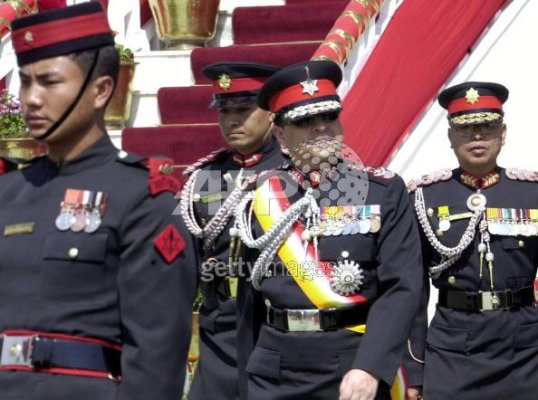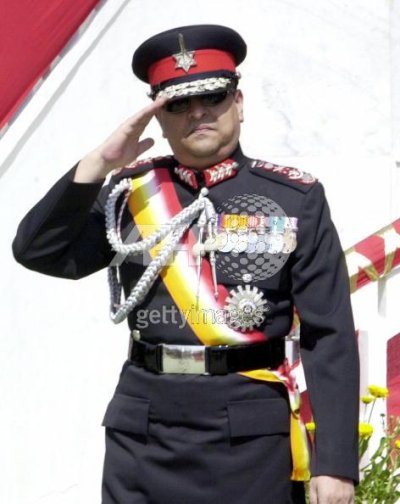Living On the Brink
As Maoist rebels spread fear and violence across Nepal, the establishment in the once booming capital watches its world fall apart
BY ALEX PERRY | KATHMANDU
On the empty balcony above the hushed courtyard outside his deserted restaurant in Kathmandu, Gautam Rana sets down a heavy scrapbook on a cocktail table and slides open its leather fastener. Inside, newspaper clippings written by society columnists, restaurant critics and travel writers from across the world document how, six years ago, Rana opened the most chic and elegant collection of boutiques, bars and bistros Asia had ever seen, in the restored outbuildings of his family's former palace. There is praise from British historians, a rave review from Bombay's most acerbic social commentator, write-ups in international leisure magazines and hundreds of photographs of a smiling, immaculate Rana presiding over concerts and book launches and hosting American millionaires at exorbitant black-tie fund raisers under white chiffon marquees. "The scene buzzes," wrote the London Evening Standard in March 2001, noting visits by Sting, Lachlan Murdoch and Steven Seagal. "By day, a sophisticated crowd of models and embassy wives shop for antiques and jewelry ... At night the mood changes—a private view at a gallery, jazz at K2 and dinner at Baithak, a small Nepalese-Mughal eatery with silver trays, Belgian crystal and peeling peppermint walls." But halfway through the scrapbook, the articles stop. The last is dated October 2002. Scores of blank pages follow. Rana leans forward, extends a languid hand from his linen sleeve and silently closes up his interrupted story. "It was fabulous, just fabulous," sighs the 45-year-old. "I could just weep when I remember those days."
The reason private jets no longer skim the Himalayas into Kathmandu is not hard to fathom. There is little glamour in the daily bloody shoot-outs between rebels and government forces that dominate the news from Nepal today. Squads of armed police and Royal Nepalese Army soldiers in armored cars and mine-clearing vehicles now guard every street corner in the capital. Gatherings of more than five people—even, Rana assumes, his famous parties—have been outlawed, and the city grinds to a halt every few days as armed police cordon off downtown blocks and break up protests against the crackdown. On the outskirts, the army raids house after house, making hundreds of arrests every day.
At night, a voluntary curfew envelops Kathmandu as its ancient alleyways and smoothed brick squares empty the moment the sun slips over the mountains. The fear is on everybody's lips: the Maoists are coming, the Maoists are coming.
The tableau of a country disintegrating in civil war is starkly at odds with Nepal's enduring image as an enchanted Shangri-la, a place frozen in time. Yet it is the country's backwardness, so charming to backpackers, mountaineers and jet-setters alike, that lies at the heart of the deadly turmoil. Though Kathmandu has enjoyed steady modernization, in the rugged hinterlands the time warp that shrouds the Himalayan kingdom—according to the Nepalese calendar it is currently the year 2060—preserves a system of feudal landlords, bonded labor and a medieval level of destitution. The Asian Development Bank estimates that 42% of the 26 million population lives below the poverty line—and Nepal's leaders have made scant effort to address the gap between the impoverished many and the privileged few. A Hindu god-king ruled Nepal as an absolute monarch until 1989. Under the current system—constitutional monarchy and parliamentary democracy—revolutionary ideology has taken hold. In a population living mostly in squalor, the most popular political parties are old-style communist, with a combined support of 44%, according to a June survey.
Of these, the Communist Party of Nepal (Maoist), or CPN(M), a renegade Maoist group, commands twice the backing of its nearest (royalist) rival. The CPN(M) forms the backbone of the Maoist rebellion that began in 1996, which aims to eject the monarchy and take the country into Stalinist isolation. The guerrillas have an attachment to an antique dogma that borders on the bizarre in the 21st century. Much to the embarrassment of the modern Chinese leadership to the north, they studiously model their uprising on Mao Zedong's Basic Tactics (1937) and On Guerrilla Warfare (1937). Their rhetoric is filled with an idealism and romance elsewhere found only in history books. "We want to turn this beautiful Himalayan country into an invincible red fort and a shining trench of world proletariat revolution," declared Maoist leader Baburam Bhattarai before the rebels took to the hills in 1996. "We are sure we will hoist the hammer and sickle atop Mount Everest one day."
But there's nothing romantic about the brutal rule the Maoists have instituted in the areas they control. Their use of torture and summary execution, their maiming of people with an education, and their targeting of any alternative authority—blowing up bridges, irrigation channels, post offices and schools—have earned them comparisons to Pol Pot's Khmer Rouge and to Peru's Shining Path.
The Maoists' latest campaign of fear, which began as soon as their supreme leader, Comrade Prachanda, called off a seven-month cease-fire on Aug. 27, has been characterized by their usual ruthless efficiency. By the night of Aug. 29, the rebels had shot dead a colonel on the doorstep of his Kathmandu home, gunned down a former government minister, firebombed the ancestral country mansion of the Finance Minister, robbed two banks and announced a three-day nationwide general strike. Some of these attacks bore a strong flavor of retribution. Fifty-two-year-old Kiran Basnet, the colonel shot in the chest and head outside his home, had been earmarked to take charge of the army's anti-Maoist battalion. Ex-Home Minister Devendra Raj Kandel, shot and wounded last Friday, was noted for offering cash for the heads of dead guerrillas. As for Finance Minister Prakash Chandra Lohani, whose mansion was set on fire, he had the simple misfortune of having been a government negotiator in the failed peace talks.
The message was clear. After years in the hills, the rebels are now operating inside Kathmandu and are able to strike at anyone, anytime, anywhere. Middle-ranking rebel commanders tell TIME they have a division of several thousand men in the Langtang mountains north of Kathmandu, which would give them a stranglehold on one of the capital's two road links to the outside world. They say they are now embarked on the final phase of Mao's revolutionary timetable: eliminating all enemies of the revolution, bringing a terrorized capital to its knees and, eventually, overrunning the city and seizing power. "We control all the countryside," gloats Maoist political officer Ram Lohani Chaudhray. "The government and most of the army hide in Kathmandu. But we have many fighters there. We have them holed up and we will wipe them out."
For Kathmandu's businessmen and socialites, the news that the Maoists are shifting the battlefield from the hills into the city's streets comes with the alarming realization that their wealth and lifestyle, already cramped by civil war, now mark them as targets. Their anxiety increased when the guerrillas announced last week an assassination list of 217 "VIPs" that they wished to add to the toll of 8,000 lives already lost in the seven-year conflict. "The rebels are planning an urban guerrilla war in Kathmandu," says a Royal Nepalese Army colonel. "For me, it's part of the job—I'm on patrol from the moment I leave home, like I'm living in the jungle. But for the people, it's a very different deal." Says Internet-and-media magnate Sanjib Raj Bhandari: "Things are bad and will probably get a lot worse. As bourgeois and capitalist businessmen, we'd better start worrying."
Rana, the aristocrat-cum-bistro entrepreneur, is doing just that. "Suddenly people are thinking, 'Oh, my God.' We are all frightened to live our normal lives. Even to have parties—how can you enjoy yourself when you never know when someone is going to throw a bomb over the wall?" Rana says he tries to keep his usual routine, but has taken to using personal bodyguards. Nor is such insecurity confined to Kathmandu's élite. "Most people are aware that Kathmandu is going to be the battlefield," says Devendra Ale, a manager at the Center for Victims of Torture, which treats casualties of the Maoists and of the security forces. "There is fear everywhere in Kathmandu." Yubaraj Birodhi, a reporter with Kantipur Today magazine who campaigns for the release of scores of journalists detained for suspected Maoist sympathies, says, "Nobody knows what will happen. We don't even know whether democracy itself will survive."
The rebels used the cease-fire's seven-month lull to rearm, recruit and retrain, but nobody expects them to try to march en masse into Kathmandu. Even though they number an estimated 500 commandos, 8,000 regular troops and 20,000-40,000 ragtag militiamen, they would still be no match for Nepal's 68,000 soldiers and 57,000 armed policemen—not in a conventional war. But in a campaign of hit-and-run, the army, stretched thin across the country, cedes the advantage. "The worrying thing for us is the high degree of skill and expertise (the Maoists) have in the art of explosives and ambushes," says Colonel Deepak Gurung. "We've been very surprised."
With significant outside help, the army has also been brushing up its skills and upgrading its weaponry. Up to 50 U.S. special-forces trainers are now pushing 20 battalions of 700-800 men each—a quarter of the entire army—through a 12-week counterinsurgency program, according to a Western diplomat. Washington has also supplied the Royal Nepalese Army with 5,000 M-16s, with another 5,000 due; Belgium sold Nepal 5,500 machine guns, and Britain and India have lent military advisers.
The stationing of so many well-armed troops in Kathmandu Valley has made some in the capital complacent. This week the Miss Nepal 2003 contest will go ahead as planned in Kathmandu. And in a bizarrely bold move, a new city-center nightclub, called Platinum, aimed specifically at Nepal's high society, is also due to open this month. "A lot of people still believe the risk is not real," says Bhandari, the media mogul. "There's a degree of denial. History tells us there are always parties and merriment just before regimes fall."
This surreal failure to face reality is not confined to Kathmandu's socialites. By common consent, Nepal's politicians have been misgoverning the country since 1989: they've squabbled over who should be Prime Minister (there have been 13 in 13 years) and have failed dismally to tackle the aching poverty that gives the Maoists their popular support. The situation was aggravated by the enthronement in June 2001 of King Gyanendra who, rather than displaying some sorely needed sensitivity after much of the royal family was gunned down by a drunken, lovesick prince, has sacked two Prime Ministers and suspended Parliament. Many feel that the Americans, too, are having trouble facing facts. There is now the small but distinct possibility that Washington has backed the losing side in a conflict of only marginal relevance to its war on terror. And allegations that the army captured and executed 19 Maoist leaders last month have again raised questions about Washington's commitment to a force that regularly faces accusations of human-rights abuses. "There's a growing feeling that the Americans may have overextended themselves," says a European diplomat.
There is one reality no one can ignore, however. After a brief holiday as a modern city, Kathmandu is suddenly in danger of rejoining the rest of the country in the Dark Ages. Hotels, tourist stalls and restaurants are shutting down and aid donors are shelving vital infrastructure projects. Life in the capital is being ravaged by Maoist extortion rackets, oppressive policing and a slew of paralyzing protests and strikes. The economy is in recession for the first time in memory, and the possibility of Nepal becoming a failed state is now openly discussed in diplomatic circles. "It could all go up in flames," wrote the Nepali Times in a business commentary last week.
With so much invested in their homeland, Rana and Bhandari say they have little choice but to stay. "We still feel we have something to contribute," says Bhandari. Rana is more emphatic, arguing that as entrepreneurs, taxpayers and employers, individuals like he and Bhandari did more to bring Nepal into the modern age and alleviate hardship than any politician, diplomat or revolutionary zealot. "You know, I built this out of a cowshed," he says, gazing out over his empty, impeccably tasteful dream. "Everyone thought I was mad, and perhaps even more so now. But I wasn't, you know. I was a success. And for a time there, it was glittering."
——With reporting by Yubaraj Ghimire and Campbell Spencer/Kathmandu
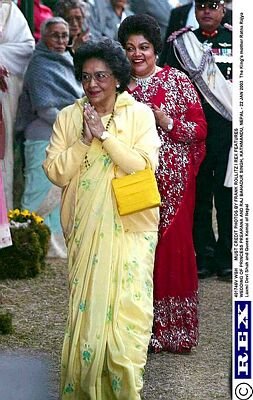 728763_03.jpg35.2 KB · Views: 18,920
728763_03.jpg35.2 KB · Views: 18,920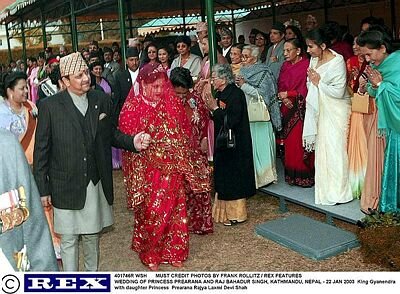 728763_03.jpg44.9 KB · Views: 36,156
728763_03.jpg44.9 KB · Views: 36,156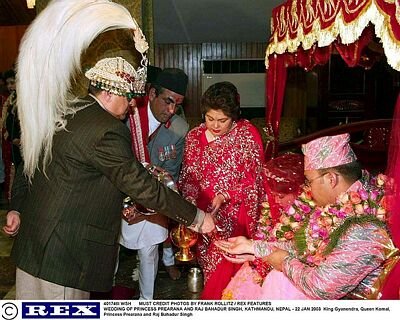 728763_03.jpg43.5 KB · Views: 32,261
728763_03.jpg43.5 KB · Views: 32,261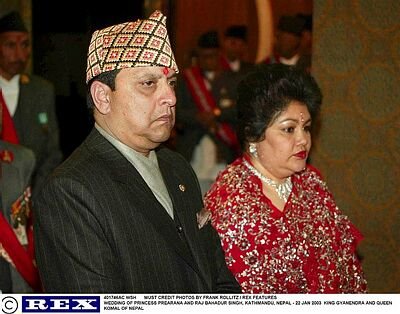 DANISH_20BANQUET_317289G.jpg33.3 KB · Views: 17,928
DANISH_20BANQUET_317289G.jpg33.3 KB · Views: 17,928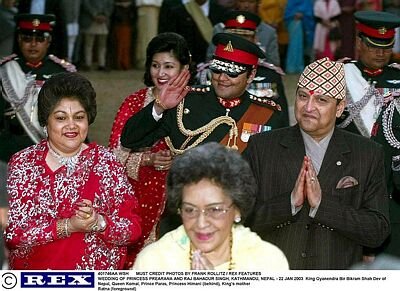 728763_03.jpg38.9 KB · Views: 24,527
728763_03.jpg38.9 KB · Views: 24,527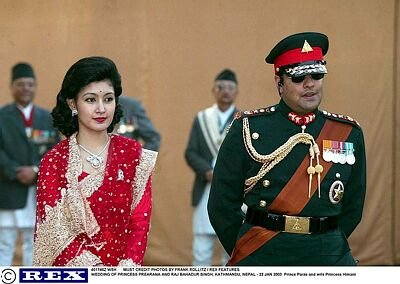 728763_03.jpg28.8 KB · Views: 23,028
728763_03.jpg28.8 KB · Views: 23,028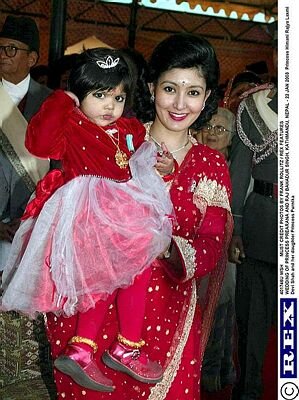 DANISH_20BANQUET_317289G.jpg39.8 KB · Views: 39,565
DANISH_20BANQUET_317289G.jpg39.8 KB · Views: 39,565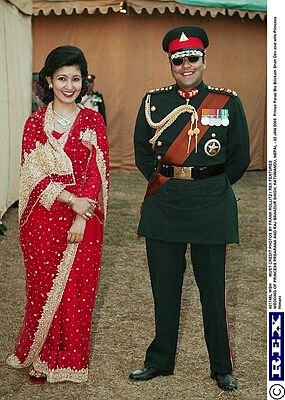 728763_03.jpg38.4 KB · Views: 36,844
728763_03.jpg38.4 KB · Views: 36,844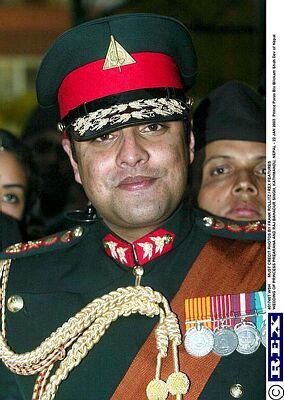 DANISH_20BANQUET_317289G.jpg31.8 KB · Views: 12,517
DANISH_20BANQUET_317289G.jpg31.8 KB · Views: 12,517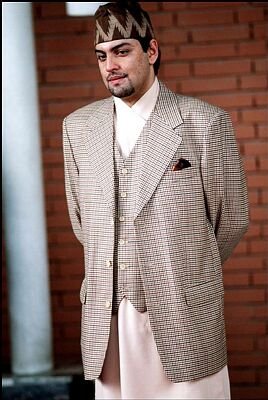 DANISH_20BANQUET_317289G.jpg27.8 KB · Views: 10,160
DANISH_20BANQUET_317289G.jpg27.8 KB · Views: 10,160

